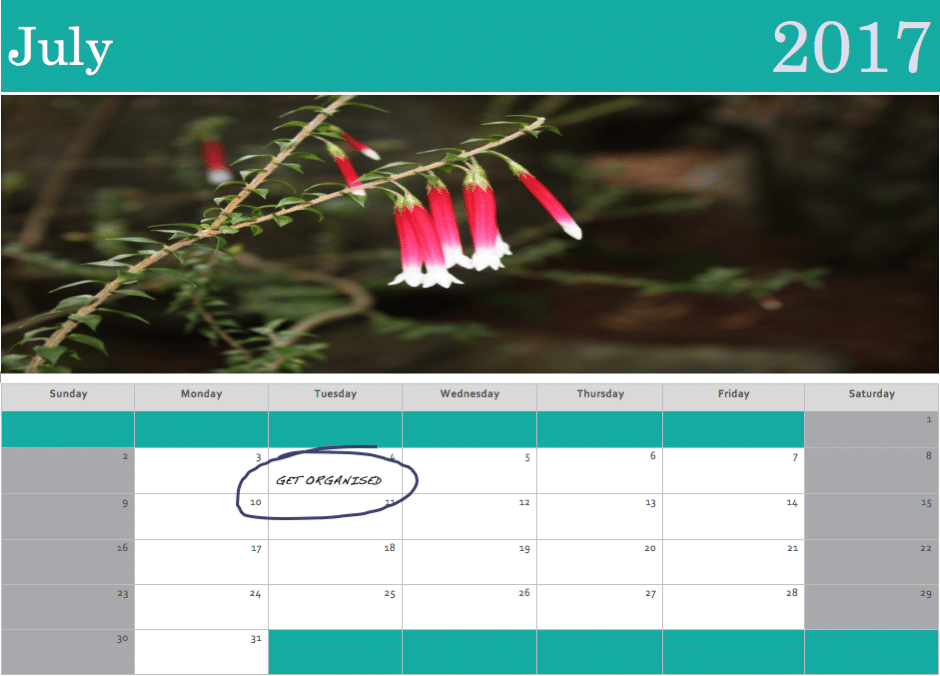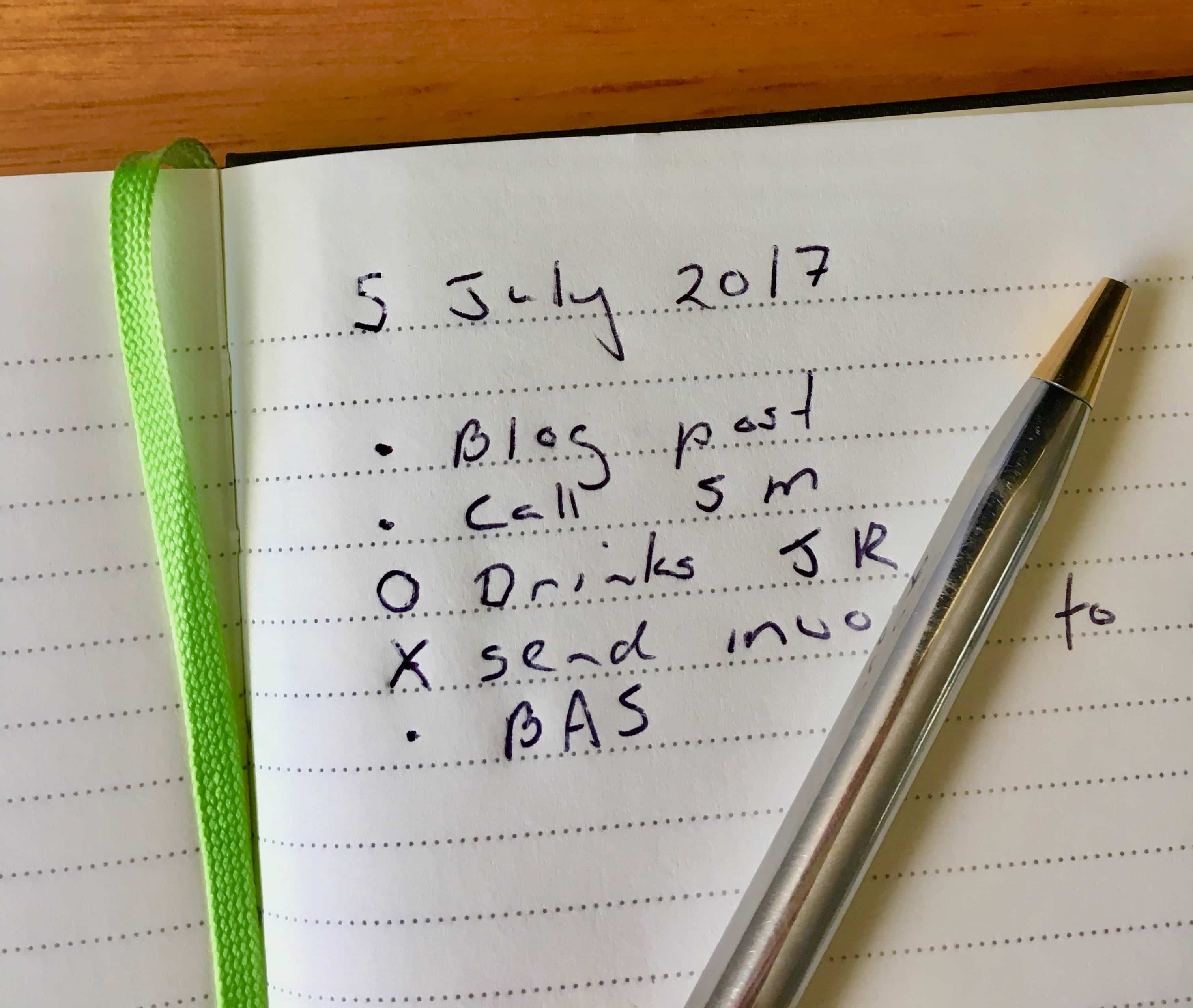I’ve always been organised, taking pride in meeting deadlines, getting important tasks done, having a tidy and organised home and remembering birthdays and special events. I loved my big Day Runner planner in the 90s, taking it to every meeting, and at the beginning of each new year writing in all my family and friends’ birthdays and important events. I was the first in my office with a Palm Pilot in the 2000s, copying across all those birthdays and recurring events feeling oh so clever and early adopter-ish.
As technology evolved, so did my appointment and task keeping; my calendar on my Mac synchs with my iPad and iPhone and all those birthdays are kept in my Contacts and magically appear in my calendar each year.
I love being organised and am partial to a cool gadget or two.
However, in recent times I’d started to feel that whilst on the face of things I’m still Ms Organised, and haven’t missed any meetings or important tasks, I could be more productive with my time. That perhaps there’s a better process for recording and prioritising all the tasks (and ideas) that make up my work and daily life.
I’ve found that whilst the big things are easy to manage and prioritise, the constant conversation that goes on in my head around “everything I need to remember” can be a bit exhausting and counter-productive. Thinking “I must remember to clean the washing machine/fertilise the roses/buy coffee beans/send that invoice,” isn’t helpful when I’m in a meeting with a client.
So, I began researching and testing different organisational processes and tools to see if a change to how I organise my organising would make a difference.
From this I’ve adopted a combination of tools and processes, both electronic and paper-based that I am now putting into practice, and so far, seem to be working.
- Scheduling
I’ve found an electronic calendar app (for me it’s iCal on my Mac) synched to all my devices is the only way for me when it comes to keeping on top of appointments, meetings, recurring tasks and events. I’ve also found that keeping multiple calendars (such as business, home, family, health) within the calendar app means I can see everything I have coming up, or filter for specific areas of my life. I associate each event to the relevant calendar and then if I only want to see, for example, family events coming up I can filter on the Family calendar. Birthdays and anniversaries are set to show a reminder a few days prior to give me time to purchase a present/send a card.
Scheduling in meetings, engagements and time to complete specific tasks is a given, however I’m also scheduling in the ordinary day to day tasks (water the indoor plants, plan meals for the week, council bulk collection day tomorrow etc) which leaves my mind free to forget about these and think of other, more creative things.
- Task lists and note taking
I experimented with keeping my task list as an event in my calendar, I also tested various online note taking apps. Being able to access and add to the list from any device was a great idea, however I found that an electronic task list isn’t for me. For some reason, it is easier to ignore, forget, skip over, or simply delete (when I’m tired of feeling guilty looking at a task I’ve still not done) when it’s electronic. I also found that simply deleting a task once completed didn’t provide that sense of completion satisfaction.
In my 20s I kept a notebook with a ruled line down the left-hand side with each task written to the right, an asterisk in the column meant it was an action item, no asterisk meant it was a note, and once completed I used a ruler to neatly rule through the item. This notebook went to every meeting with me and when it was full I filed it and started a new one. I don’t remember when I stopped using this method, probably when email was invented, typing overtook writing, multi-tasking took over and always connected became a thing. And then I simply fell out of practice.
Rapid logging and Bullet Journaling takes my old note taking to a new level. To fully appreciate how it works Ryder Carroll explains it here on the BuJo site. Briefly, it is a paper based journaling system where tasks, notes and ideas are written as succinctly as possible and different symbols are used to denote, a task, an event, an idea for later research, whether it is completed, to be moved to the next day, no longer relevant and so on. It’s rapid logging that captures tasks and ideas. The task list is written every-day, carrying over tasks that have not yet been completed or striking out ones that are no longer relevant. The effort of moving a task gives the mind a moment to consider whether it is a task worth doing. A simple indexing system makes it easy to refer to specific notes, and future lists are used to capture and schedule items for future dates or ideas to be explored at some time.
I’ve been using BuJo for the past month and so far, it’s working beautifully for me. Events, tasks that become events, or tasks that require time set aside to complete are scheduled into my iCal. Where a task is a specific project that has multiple sub-tasks (say a large client project, or a holiday planning and packing list) the main or current task is recorded in my journal and the specific actions are moved to my Project To Do Lists in Evernote (see below).
For me there is something deeply compelling about a task written down on paper and the act of physically crossing the item off the list when completed is very satisfying. It makes procrastination more obvious when I must re-write a particular task each day. Why haven’t I done it yet? Is it worth doing? Shall I ditch it? It will still be there in ink with a line through it – so think carefully. Likewise putting an item on the list requires a moments real thought before writing it down in undeletable ink.
My note taking is more considered too, and I’m thoughtful about whether it is simply a note, a point of interest or a task, and annotate them as such as I go. A reminder of my earlier note taking days.
I’ve been using Moleskine’s Evernote Business notebook for some years for note taking and this week I found it quite joyful to open a brand-new notebook and set up my bullet journaling for the new financial year.
- Specific project to do lists
For specific projects, I detail these in individual, categorised notes in Evernote, a note taking app that synchs across all my devices and can be shared with others in the team/family that need to see and or add to the same information. This might be items or documents such as project plans, inventories, gift lists, event planning or holiday packing lists.
As noted above, using an app like Evernote as my day to day note taking and task list tool didn’t work for me – I’ve found the act of writing on paper is an important component for me. However, I know this is how my husband keeps a track of his tasks (and how I quietly add new items to his to do list). Horses for courses.
Using different apps designed for different tasks, such as trip packing apps, or Christmas gift list apps hasn’t worked for me either. With their sporadic use, they’re not on my home screen and I forget about them plus multiple places to find lists seems counterproductive. One exception is the simple Grocery app I have on my phone (sadly no longer being updated*). Generally, I have my phone on the bench when I’m cooking – as soon as I use the last of a staple ingredient I add it to the app, and my phone is always with me when I’m out shopping.
- A couple of other apps I find useful
Two other apps I find useful to organise my life are Instapaper, which allows you to save articles to read offline later (great to save a bunch of articles prior to getting on a long flight) and Paprika, a brilliant recipe organising app.
I think the key to a less stressed and more enjoyable life is being better organised and clearing your mind for creative thinking. As life changes, tweaking processes and tools makes sense. I’m certainly not saying I have everything together, however being better equipped to handle the busyness of life leaves me feeling more in control and with more time to enjoy all that life has to offer.
Time to cross off a few more tasks in my journal.
Sharon
What tips do you have for organising your daily life?
What’s your greatest challenge when it comes to being more organised and productive?
*Edit: The “Groceries” app is no longer being developed and is not compatible with iOS11 and above. I am now using an app called “List Ease” which is working quite well for me.

